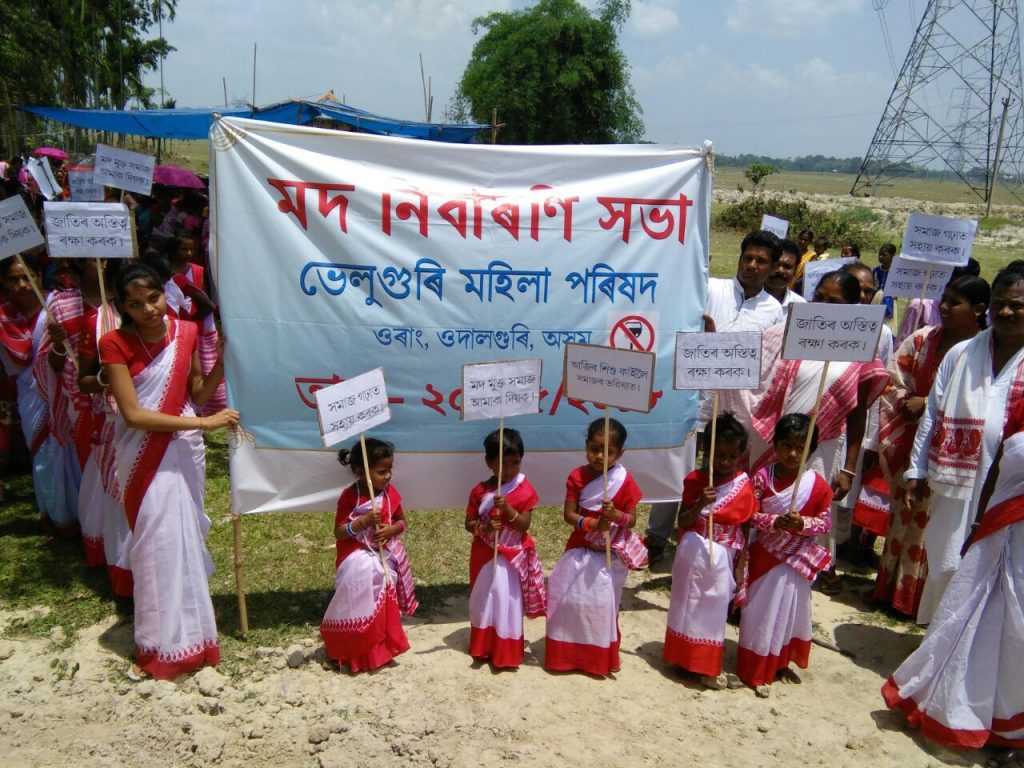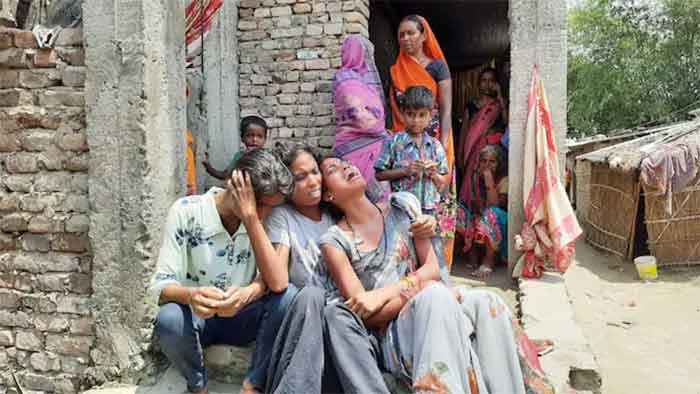
In the course of visits to many remote villages, I repeatedly learnt that women in particular are deeply troubled by the increase in alcohol consumption. A very direct impact they experienced was that the already scarce money available for meeting basic needs including food needs and education of children decreased further in poor households. This greatly troubled women who protested against men spending on liquor. This led to many cases of women being beaten up sometimes repeatedly and in terrible ways. So the two most direct and immediate effects could be seen in the form of increasing difficulty in meeting basic needs, and secondly, increase of domestic violence against women (sometimes also against children).
Later more adverse impacts surfaced as those who consumed liquor had more health problems, or were involved more frequently in accidents and brawls. The WHO says that around 3 million people die in a year due to alcohol and as many as 200 health problems are linked to alcohol consumption. Research has established that there are no minimum safe levels of alcohol consumption and all alcohol consumption is harmful to a lesser or greater extent. In addition an alarmingly high number of crimes, including nearly 50% of all sexual crimes, are committed under the influence of liquor. Alcohol has a role in a very large number of all accidents too (not just road accidents).
There are very heavy social costs of alcohol consumption in the form of various forms of violence, crime and disruption of relationships. The WHO status report has presented various estimates that have been made from time to time about financial implications of these social costs:
i) Estimate for the European Union, Year 2003 – 125 billion euros
ii) Estimate for UK, Year 2009 – 21 billion pounds
iii) Estimate for USA, Year 2006 – 233 billion dollars
iv) Estimate for South Africa, Year 2009 – 300 billion Rand (10-12 per cent of GNP)
While this data about financial implications of social costs is very disturbing, at the same time it needs to be emphasized that violence leading to loss of life and disruption of close relationships caused by alcohol can never be fully calculated in money terms; it goes beyond that.
The many sided devastation of health and social relations as well as the huge number of injuries and violent episodes caused by alcohol consumption and addiction, as also the huge economic and ecological costs associated with this have been well documented at the world level. In developing countries like India there are three factors that accentuate this loss. Firstly many of the families affected are already so poor or economically stressed that the recurring expenditure on liquor simply ruins them. Secondly the poor availability of medical and de-addiction facilities means that the way out of the morass is available to only a few who need this desperately. Thirdly the gender equation is such that despite very low levels of liquor consumption of women it is women and children who end up bearing the heaviest burden of increasing liquor consumption in terms of denial of basic needs, increasing domestic and sexual violence.
It is in this context that the demands for curbs on increasing liquor sale and consumption have been raised by several anti-liquor movements in various parts of India, particularly rural India. These include social movements with a larger agenda which have also felt the need for resisting liquor related problems and also very specific anti-liquor movements focusing mainly or only on this issue. Women have played the most important role in most of these movements and have brought a strong sense of urgency and passion into these movements. One important specific demand of several of these movements has been to remove the liquor vend or shop from their village so that easy availability of liquor within the village or very near to the village can be checked.
In the course of my journalism work I became quite closely involved with some of these movements, first as a reporter but later, as more of a supporter and participant than just a reporter. While I found all small and big movements inspirational, perhaps the most inspiring was the one led by Shankar Guha Niyogi in the mining town of Dalli Rajhara (now in Chattisgarh state). Here nearly 9000 miners gave up liquor in the course of the movement. However the smaller movements in Haryana and Uttar Pradesh brought me in closer touch with strong feelings of women on this issue and also increased my own commitment to their cause. Contributing in the context of my own professional work, apart from writing many articles and reports I also tried to help by writing many booklets on this subject which proved to be quite popular.
Now in my elderly years I decided I should devote more time to this and got involved in this in some villages. How far these efforts will succeed only time will tell. Also we need to decide very clearly what form our efforts will take. In one village women got excited and said that they are going to start a protest at the local liquor vend the next day. However my experience from previous such efforts has been that these can be very long drawn out efforts and the dalit women of this hamlet I knew were very poor and will find it difficult to sustain this. So I did not encourage then to go ahead immediately.
In fact most of my efforts so are are with the poor, and so we are at least initially giving more attention to creating such conditions in which men can voluntarily give up liquor. I have not been very enthused by the prohibition efforts of some states and complete bans on liquor leading to several people being jailed and a proliferation of liquor smuggling, including the potentially even more harmful illegally brewed liquor. While most governments have paid lip sympathy to anti liquor sentiments, in reality most governments have been happy to collect their massive earnings from sale of liquor. In addition several politicians have close links with liquor mafias and some of them have themselves entered liquor production and trade. Despite all this, several governments have been forced to respond to growing public sentiments against liquor, particularly in the context of women voters. They have responded to the anti-liquor sentiments of people particularly women in various ways. Prohibition has been in existence in Gujarat for a very long time and was introduced much later in Bihar. Other state governments have agreed at times to removing liquor vends if certain conditions such as opposition by more than 50 per cent local population in the form of signatures for removal of a particular liquor vend can be shown or proved.
On the whole, however, the massive, many-sided harm caused by alcohol has been increasing. However one ray of hope is provided by the fact that where sustained efforts by people’s movements are made there alcohol consumption comes down significantly and this reduction is sustained for a long time. The big lesson here is that sustained public campaigns and community efforts are necessary for sustainable reduction of alcohol consumption and other substance abuse. Merely government action cannot succeed in a significant and sustainable way even if it is well-intentioned, this has to be supplemented by a sustained, continuing public campaign against liquor and other intoxicants and various forms of substance abuse. This should involve various respected members of community who have credibility. This campaign should have strong links with schools and colleges so that a strong anti-liquor message can be imparted in friendly and interesting ways at an early age and can be included in the curriculum.
Thus a combination of suitable, well-thought government policies suited to local conditions and sustained, broad-based public campaigns with women and respected community leaders playing an important role can together succeed in reducing liquor consumption and all the associated problems to a considerable extent.
There should be a clear and consistent policy guideline that alcohol consumption needs to be minimized and discouraged as much as possible. There is adequate evidence of many- sided serious adverse impacts of alcohol consumption to support such a policy. Although efforts are been made all the time by the alcohol industry and its lobbyists, as well as many layers of liquor mafia in many countries including India, to dilute the evidence against alcohol and even promote its imaginary benefits, such misrepresentations of facts and analysis should not be allowed to dilute any strong policy decisions to discourage and minimize consumption of liquor.
What exact form this policy takes will depend on diverse conditions of various societies. What is perhaps common to all societies is that there should be a well- informed sustained campaign against many- sided adverse impacts of alcohol. Such campaigns should be adequately supported by governments. All containers of alcoholic drinks should carry strong warnings of health and social adverse impacts. Efforts to present alcohol in attractive settings should be discouraged in various ways. There should be a ban on advertisements of alcoholic drinks.
More specifically in conditions of rural India there should be clear policy that no liquor vends or shop can be opened in a village where 50 per cent or more people sign a petition against it. At the same time there should be very strong action against illegal or secretive sale points of liquor.
Similar decisions can be taken for urban localities keeping in view their specific conditions.
The government policy should cease to see liquor as a source of obtaining more and more revenue. Instead looking at the wider, much higher adverse impacts of liquor the government should make available resources for strong action to minimize the consumption of liquor as well as for efforts of de-addiction and rehabilitation.
The government should try to take the active participation of people, particularly women, in many sided efforts to curb liquor consumption.
Bharat Dogra is Honorary Convener, Campaign to Save the Earth Now. His recent books include Planet in Peril, Man over Machine, When the Two Streams Met and A Day in 2071.












































